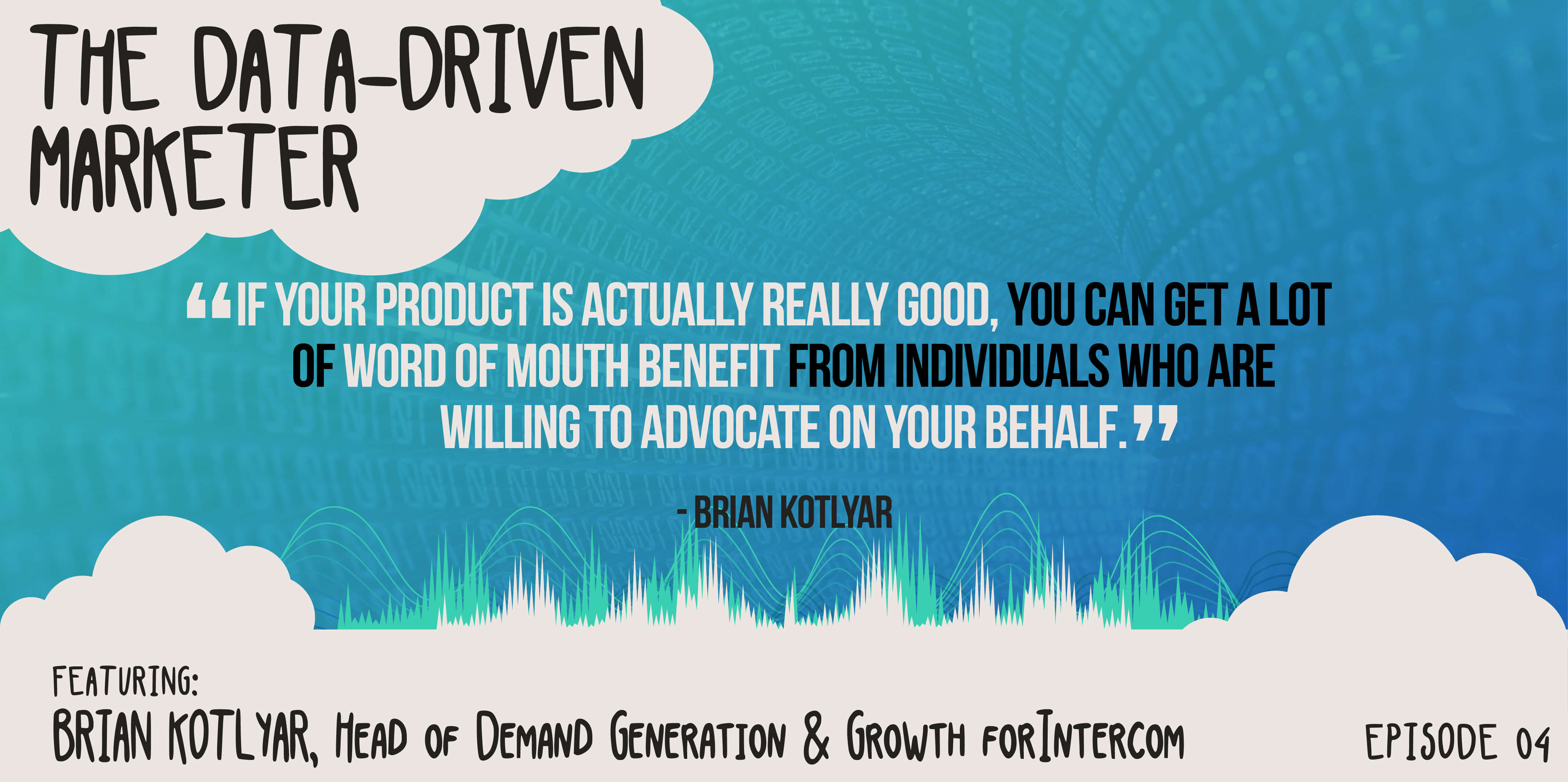
Blog | Ep 4: Brian Kotlyar – head of demand generation & growth, Intercom
Could an Intercom chatbot become the most profitable member of your marketing and sales team?
Most likely, according to Brian Kotlyar, Head of Demand Generation & Growth for Intercom, a customer messaging platform.
Sales chatbots have a reputation of being somewhere between the annoying Clippy (from Microsoft Office 97) and C3PO (the Star Wars android that was fluent in over six million forms of communication). But with natural language processing, machine learning, and AI, they can do a lot of the heavy lifting for sales, marketing, and customer support.
Chatbots can acquire leads, demo products, help onboard new customers, and of course offer customer support.
Messaging is the number one choice for interactions
Imagine a website with three buttons on it:
- Click to dial an 800 number and we’ll call you back.
- Click to fill in your email and we’ll get back to you.
- Click to chat right now.
Guess which one always gets the most clicks?
People are now accustomed to personal messaging through apps like text, Whatsapp, Facebook Messenger, iMessage, Snapchat. Text chat has become the dominant way that people communicate with one another.
In a business context, these same individuals still want to chat. So businesses need to meet people where they are and communicate in the way they like to communicate.
If chat’s the way people want to communicate, do you have to staff up significantly to manage the chatbot?
For most top of funnel inquiries, chatbots can distinguish between things like sales questions and product return questions. And then they can route the chat stream to the appropriate human if the chatbot can’t handle the inquiry.
On the prospect side, the sales chatbot offers speedy answers to questions that aren’t easily available elsewhere on the website. This creates a high-quality customer experience.
And it saves your human team for very high-value experiences with your prospects. The chatbots can push the prospect further down the sales funnel by addressing their top-level questions. They can ask for a demo, or make an appointment with a salesperson.
“A lot of times we’ll see folks who put one of our products on their website and suddenly meetings are getting booked for their sales development teams,” says Kotlyar. “It happens almost magically because there are high-speed, high-value interactions happening with the bot on the front end of the site.”

Who sends in the chatbots?
Marketing is usually in charge of anything on the website. Especially anything that can affect conversion rates or load times, or change user journeys. So they usually begin the chatbot discussion. But bringing in sales and support early on gives them an opportunity to influence the purchase.
Sales may be resistant to bots because they believe they lack the ability to engage and sell to a prospect on-the-fly the way a human can. But once you show them that the bain of a salesperson’s life—all that outreach—is eliminated by people coming to the site, the dynamic changes.
Most of the time a salesperson has very preliminary interactions with lots of “leads” the vast majority of which end in a “No” or “I’ll talk to you later.” With a sales chatbot on the site, the bot receives all the brush-offs, pushing the prospects who request sales calls or demos further down the funnel.
Suddenly you’ve done this really magical thing where you’ve reprioritized the time of your team toward the highest value things they can do—selling and closing and advancing deals—as opposed to relatively low-value things like sending lots of outbound emails or doing rudimentary qualification.
Another plus for chatbots is that they have message discipline. They’ll deliver exactly the messaging marketing and sales want without variation. While you lose some dynamic human creativity dealing with an early prospect, you gain message analytics data.

How do you get started using chatbots?
Creating an Intercom chatbot script is like creating a nurture stream or a decision tree in your marketing automation tool. You create branch paths for the typical buying questions and patterns that people have.
You can design bot flows around your process—whether you have very transactional buyers or long sales cycle buyers who require more education or have less structured questions.
For example, you could have two buttons. One says “I want to buy now” and the other, “I want to learn more.”Depending on which they click, the prospects will go down different logic trees.
While this sounds complicated, you can design the decision tree process on a whiteboard in a matter of hours.
“If you decided to get a bot with Intercom on Monday, it could be live by Wednesday or Thursday,” says Kotlyar. “It might take some time to enable your internal teams like your SDRs on what to do with these new leads, but that’s kind of a cool problem to have.”














